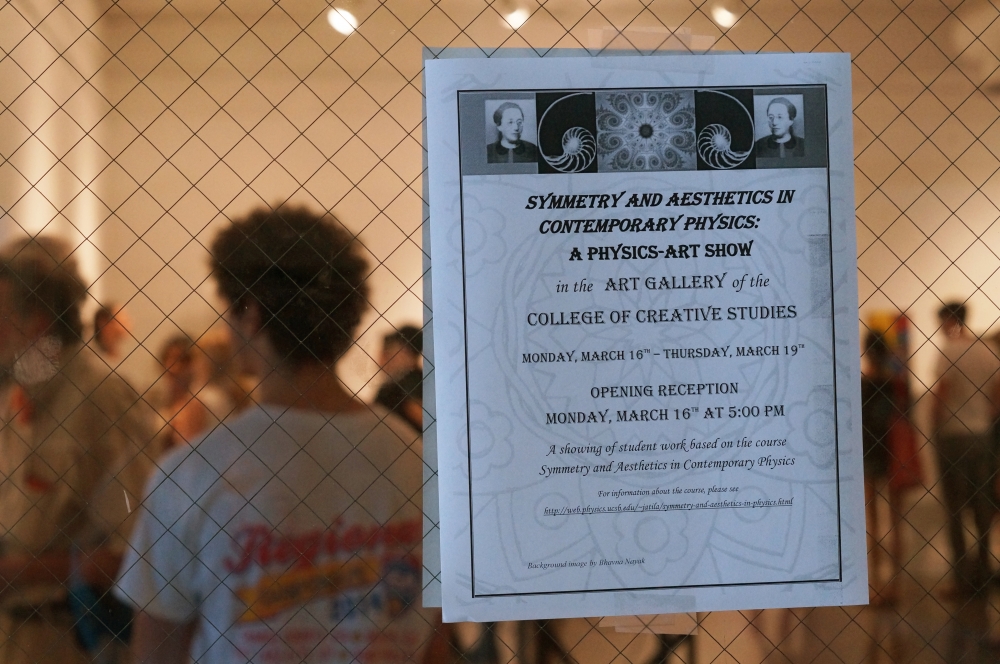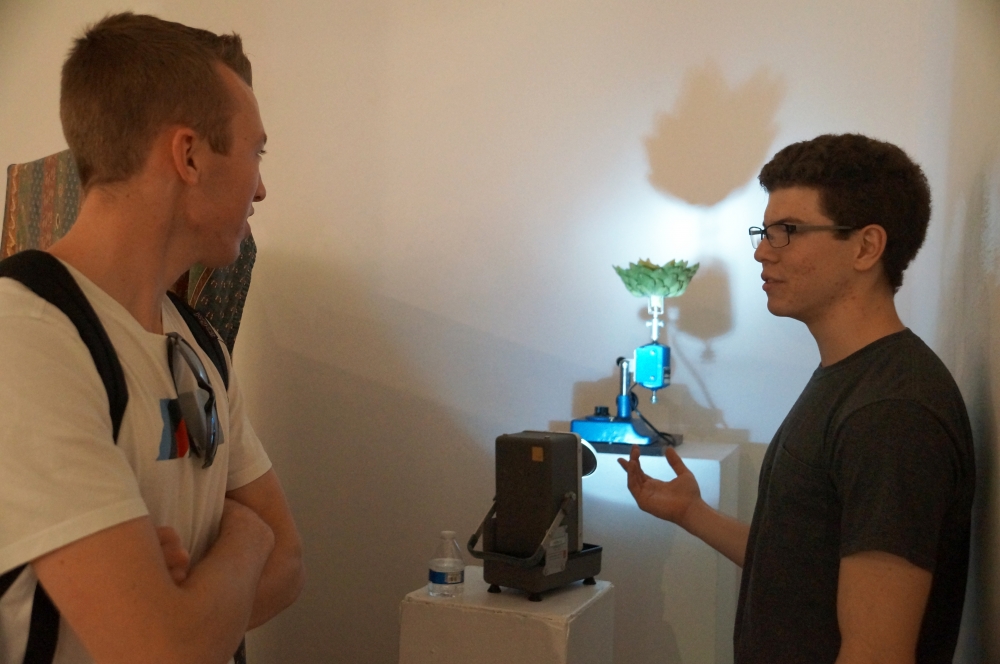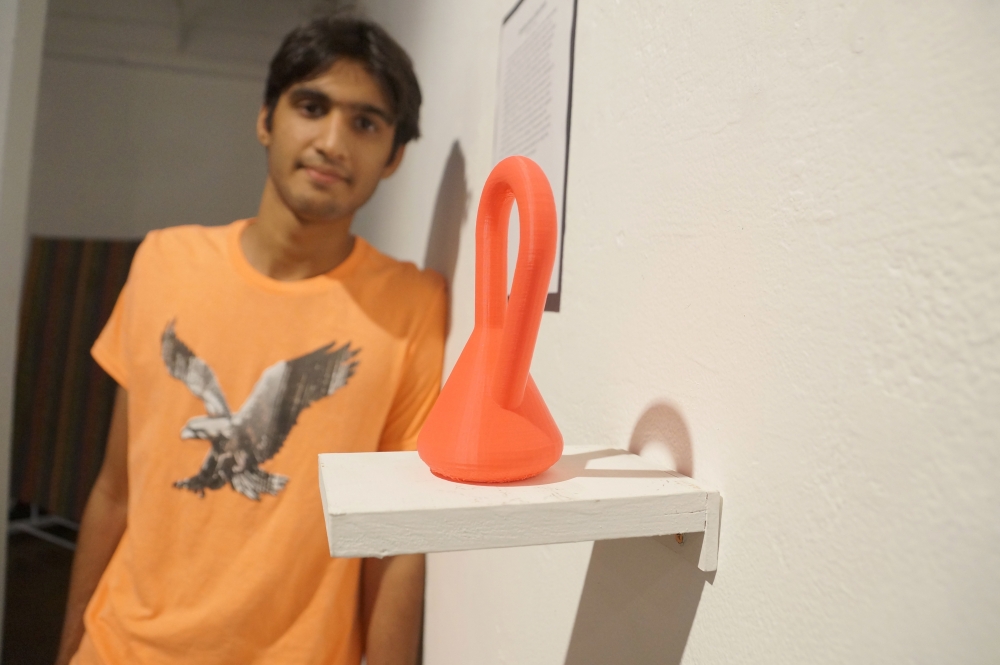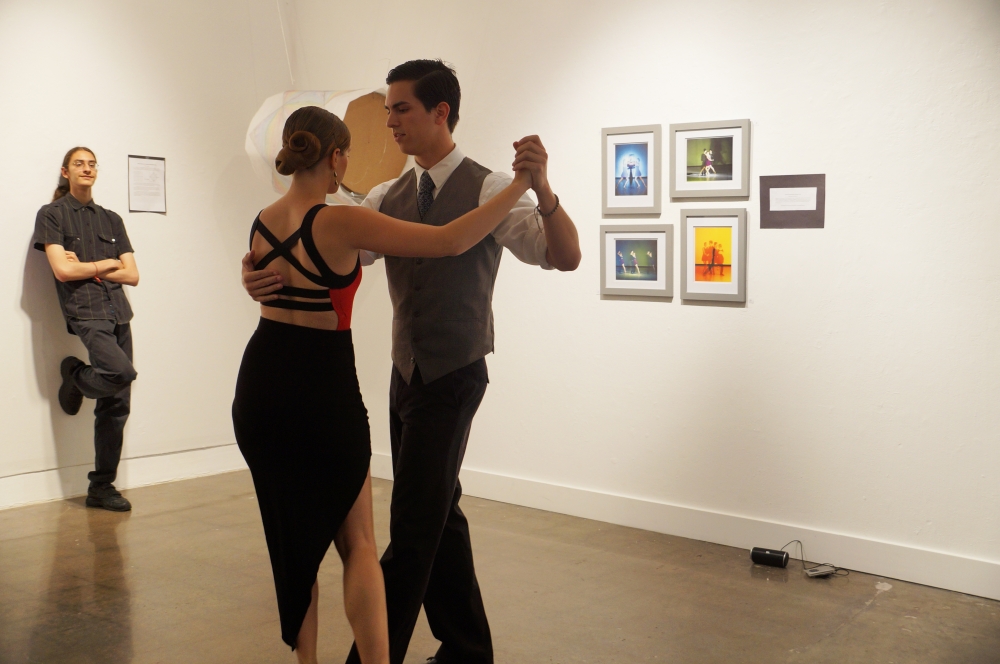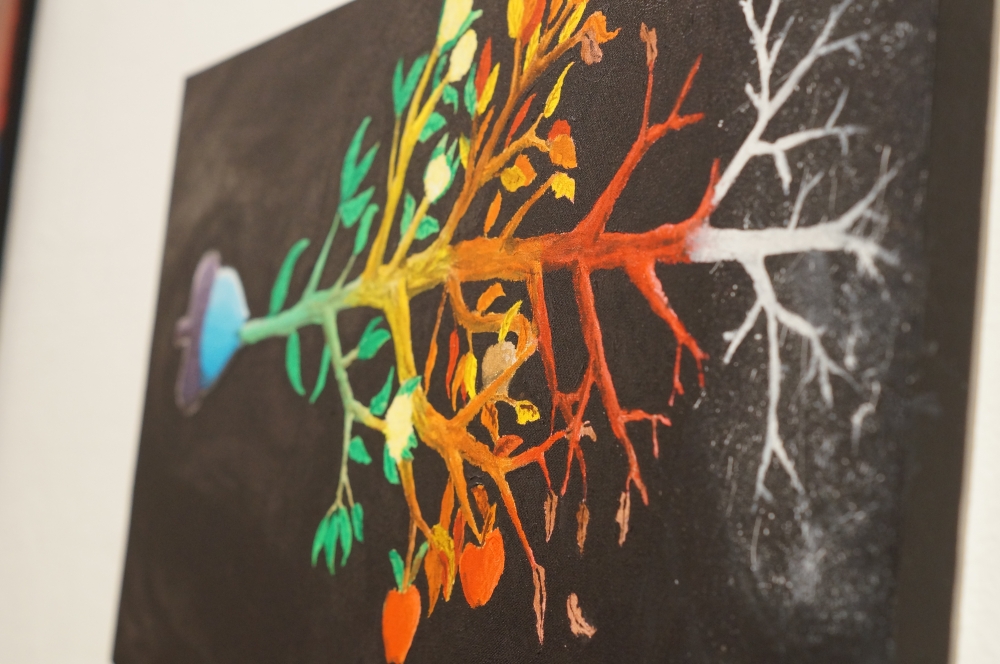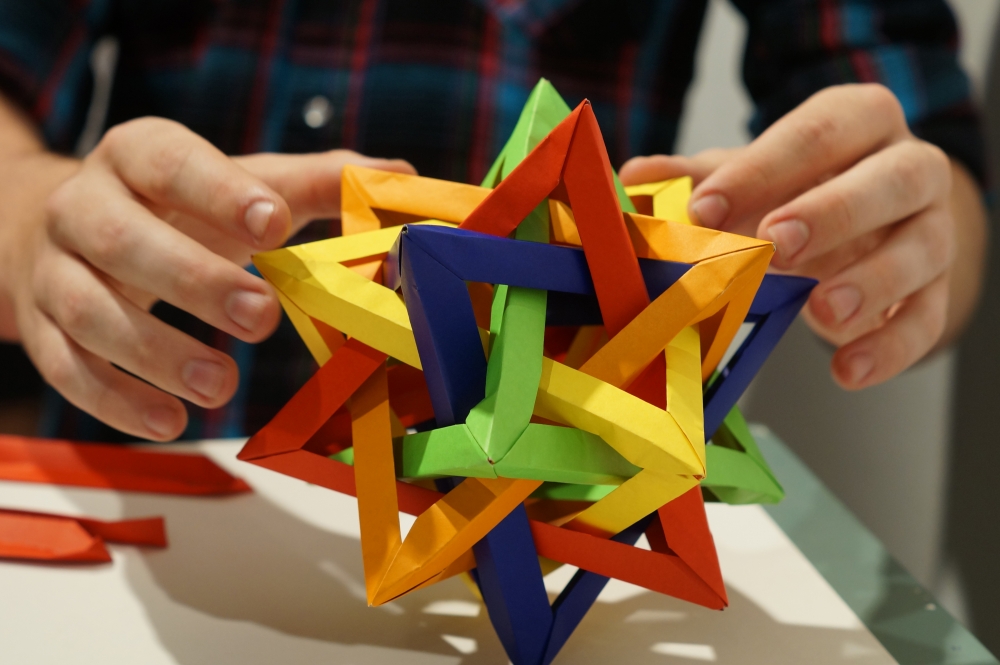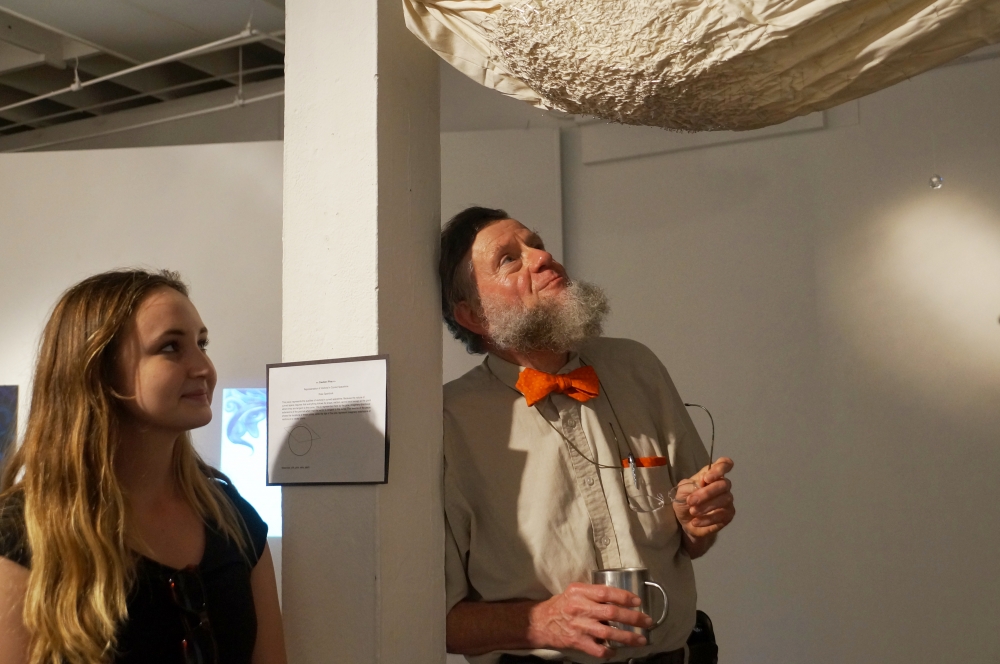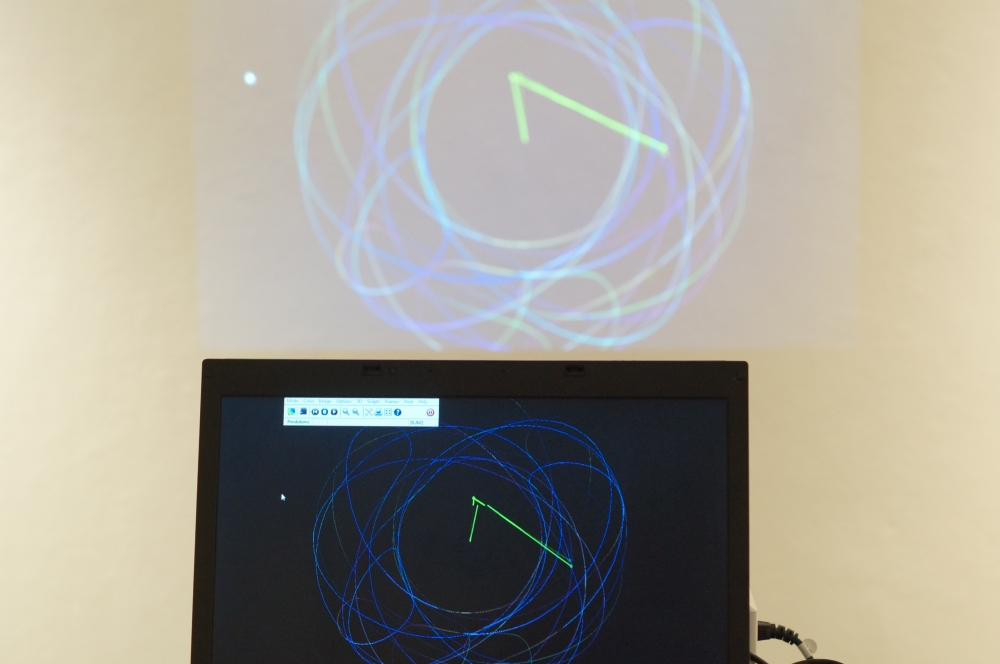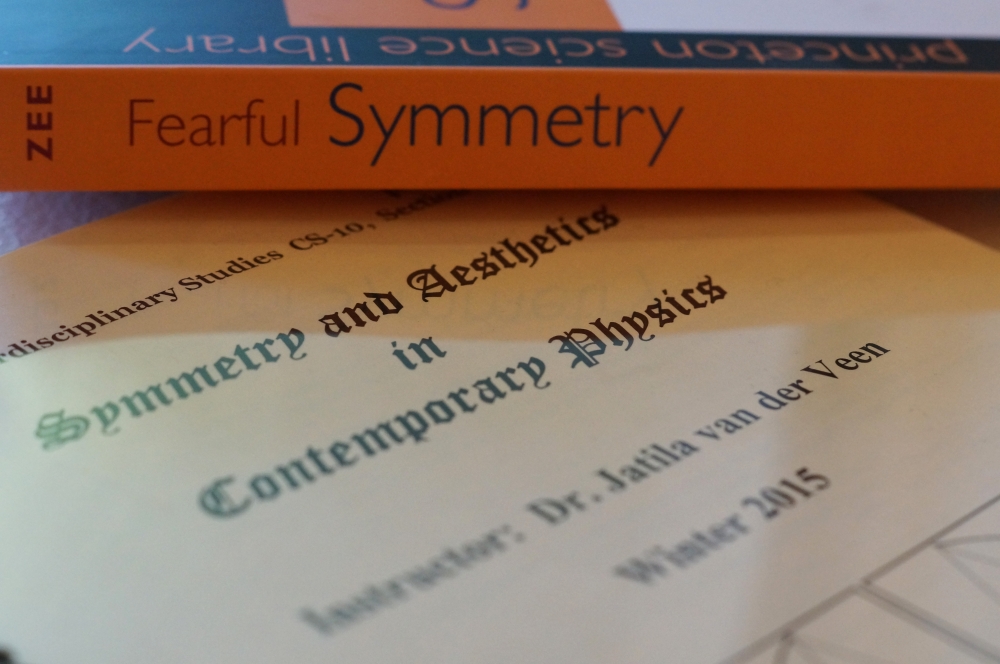The Art of Physics
It looks like a typical art exhibition, with a gallery reception, conversation, food, and even a little music and dance. But for the students in physicist Jatila van der Veen’s, “Symmetry and Aesthetics in Contemporary Physics” course, it was a final exam.
Want to know about the Fibonacci sequence? Check out the spinning artichoke. Interested in the exchange of symmetry and asymmetry in movement? Look at Argentine Tango. A single pendulum might be the essence of symmetric aesthetics, but watch a double pendulum carve out a chaotic two-dimensional path of light and the result is hypnotic, not to mention a depiction of the Universe at its origin.
Using art as a lens through which to view the fundamentals of physics, the College of Creative Studies’ (CCS) students demonstrated their learning by drawing, dancing, painting, photographing and constructing works in various mediums, then showing their art. As their final exam, they were required to stand by their work during the reception and explain their chosen concept.
The show is part of van der Veen’s NASA-funded course that incorporates art and alternative methods to teach physics to undergrads. Not only does it use explorations in various media, it also begins with lessons in symmetry and theoretical physics, as opposed to introductions into Newtonian physics.
“It’s a bit more appealing, more interesting, and more difficult,” van der Veen, who is also a CCS lecturer, said. However, she added, the topics are also more relatable. The development of her course, which she has been teaching for eight years, involved the input of several experts, including David Gross, UCSB Nobel Laureate in Physics (2004); Jean-Pierre Hebert, artist-in-residence at UCSB's Kavli Institute for Theoretical Physics; Christopher Hill, theoretical physicist at Fermilab, and other notable theorists.
The art show/final exam will continue at the gallery at the College of Creative Studies through Thursday, March 19, 2015.
